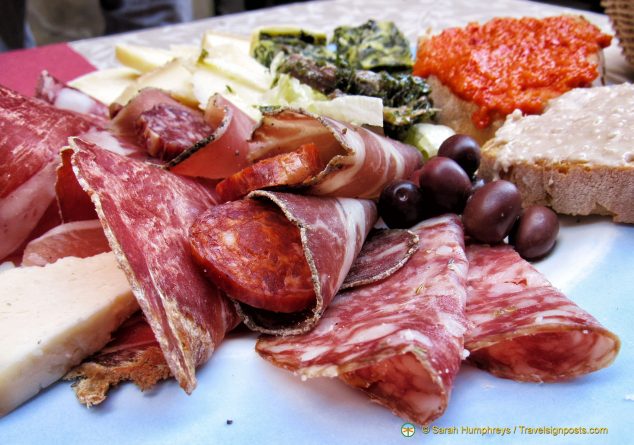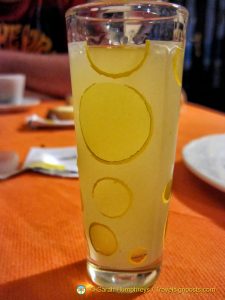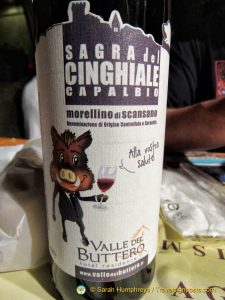Italian food is an institution: don’t let its unwritten rules catch you out…
Oscar Wilde once said,“ I can’t stand people who do not take food seriously.” He would have been perfectly happy with Italians. Italian food is an institution and one of the main attractions for overseas visitors. It is impossible not to be tempted by mouth-watering gelato, freshly rolled out pizzas and plates of steaming pasta smothered in homemade sauces.
Unwritten Rules
Despite the fact that Italians often seem to ignore laws and rules, when it comes to eating, there are several unwritten rules which can catch out the unwitting foreigner. Academia Barilla, which aims to “defend and safeguard Italian food products”, has recently come up with a tongue-in-cheek guide to helping non-natives avoid gastronomic faux pas.These include never drinking a cappuccino after breakfast time has passed, never ordering pasta as a side dish and avoiding the “true culinary sin” of adding ketchup to pizza or pasta. If you want to blend in with the Italians, you should not add cheese to fish, eat pasta with chicken or walk and eat, unless you are strolling with a gelato (ice-cream).
Breakfast (“Colazione” ) and Elevenses
Although breakfast is usually a quick affair, consisting of milky coffee and a cornetto (pastry), it is common to have a mid-morning snack such as a panino. (Panino is singular, Panini, which is now commonly used in Anglo-Saxon countries to describe a sandwich, is a plural word.) Cappuccinos may be frowned on mid to late morning, but it is perfectly acceptable to have an aperitivo of wine or prosecco shortly before lunch, with the excuse of “waking up the appetite”.
Lunch (“Pranzo” )
Lunch is the largest meal of the day, especially if eating with an Italian family. Many Italians still go home for lunch every day, since many shops and offices close from 1-4 pm. Sunday lunch may stretch over several hours and is a time for the family to get together, relax and chat.
On special occasions, meals will consist of an antipasto (starter), primo (first course) which is often pasta, risotto or soup, secondo (second course) often meat or fish, contorno (side dish) and dolce (dessert) sometimes with fruit to follow.
You are not normally required to eat all of these in one sitting, one or two courses will be quite sufficient, but at weddings, birthdays and other celebrations you may be presented with several dishes in each Italian food category. Be hungry!
It is customary to drink espresso after meals and a digestivo, a liquor such as grappa or limoncello, which you may well need.Dinner (“Cena” )
Dinner is normally eaten between 7.30-9.30 pm and is often a smaller meal than lunch. If you are peckish in the afternoon, it is typical to have “merenda” between 3-5pm, to keep you going before reawakening your sleepy appetite with a pre-dinner aperitvo, typically served with nibbles and finger food.
Luckily, the Mediterranean diet is considered to be one of the healthiest in the world due to its abundance of fresh seasonal fruit and vegetables, olive oil and fairly low consumption of dairy products and red meat. Italians proudly boast about the origins of the food they eat, particularly if it comes from a family or friend’s vegetable plot, orchard or olive grove.
Diversity
Italian cuisine is noted for its regional diversity. Austrian, Hungarian and Croatian influences can be tasted in dishes typical in the North, such as stews and spicy meatballs. Southern recipes share elements of Spanish, Greek, Arab and African dishes, including couscous based dishes and the use of flavours such as saffron.
Many traditional Italian specialities were originally considered to be peasant food, such as polenta, which is made from finely ground maize meal and widely used in Northern Italy. Nowadays, it is often served with mushroom, vegetable or rich game sauces. A common Tuscan dish, Ribollita, which means “reboiled” is traditionally made from reheating leftover vegetables and using up old bread.
Wine
Naturally, Italian food should be accompanied by fine Italian wines, and there are 20 wine regions offering hundreds of varieties ranging from Piedmont’s sparkling sweet white Asti, to Sardinia’s heady red Cannonau. Travelling down the country, the influence of the Mediterranean causes grapes to become riper and creates lush, stronger vintages.When choosing wine, you should look out for bottles with the DOC label (Controlled Designation of Origin), which means the wine has been produced using traditional methods and been professionally tasted to guarantee the quality. DOCG wines (Controlled and Guaranteed Designation of Origin) are a step above DOC wines and are guaranteed to have been controlled for production.
You should also seek out the “Gallo Nero” or Black Rooster label, which is awarded to the finest Chianti Classico, which comes from a very small wine producing region between Florence and Siena.
“Sagra” : sample regional culture!
Many towns and villages in Italy hold an annual sagra, a traditional festival celebrating a local product, which may be a simple vegetable, such as the artichoke or a particular type of cheese, pasta, wine or a dish such as wild boar.These festivals often have religious roots and may involve music, dancing and costumes, and usually take place in a square where long tables are set out and everyone eats together. They are a wonderful way of sampling the regional culture, eating Italian food cheaply and sharing an eating experience with the locals.
Here are a few of the more famous sagre: Sagra dell’ Uva, (Grape ) at Marino, Lazio (this one of the most famous!), Sagra del Limone (Lemon), at Massa Lubrense down south near Sorrento (where else) and Sagra del Tartufo Bianco (Truffle), at San Miniato, where special prizes are given to the biggest truffle and the oldest truffle hunter (this one is also really famous and I believe not that easy to get in because it’s so packed out). There’s also a Sagra della Rana (Frog) at Casteldilago near Arrone if you’re not too squeamish, a Sagra della Melanzana ripiena if you’re into stuffed eggplant at Savona, and a Sagra del Frico (like Rösti, a sort of pancake made with shredded potatoes and cheese) at Carpacco-Dignano. And that’s just a selection!
Preparing pasta for Italians can be perilous…pizza, not so much
Even after living in Italy for 20 years, preparing pasta for Italians is something I avoid at all costs.They have no qualms telling you the water has not been boiled properly, there isn’t enough salt, or quite simply that their mamma makes it better, and they are so right. When it comes to pasta, Italians really do it better.
Pizza, however, is slightly easier. My partner has a traditional pizza oven and makes his own dough, with secret ingredients (!). We have been known to churn out up to 30 pizzas a night, but when we have friends over, we prefer to set out ingredients and let everyone invent their own. We have tasted delights such as eight cheeses [Ed: “Otto formaggi“?!], foccacia (white pizza) with grapes, gorgonzola, honey and walnuts and mini-calzone with after-eights.
Eat like a King or a Queen!
As long as you remember never to ask for pizza with pineapple, you should have no trouble eating like a king (or queen) in Italy. If you’re not sure what to order in a restaurant, or what sauce goes best with a specific type of pasta, ask away. Italians love discussing food and are always prepared to share the secrets of their kitchens.
According to Barilla, the most important rules to remember are that food should be shared with those you love and Mamma’s advice should always be followed. Bon apetito!
Some Useful Links:
Chianti Classico – Il primo territorio di vino – …
www.chianticlassico.com
The Chianti Classico territory’s capitals are Siena and Florence and it is shared between the provinces of of the two municipalities …
Regional Italian Cuisine | The Italian Food Academy …
www.academiabarilla.com
Academia Barilla offers a variety of different online services oriented to the promotion and diffusion of authentic Italian Gastronomic Culture.










 Take Better Digital Photos eBook
Take Better Digital Photos eBook Guerrilla Travel Photography eBook
Guerrilla Travel Photography eBook
What a great article. I love Italy so much, and I just love to eat local wherever I go so this is just perfect. And I learned some interesting facts such as checking the Academia Barilla website for cool services and to look for a sagra the next time I go! thanks
Such a variety of food! And it all looks incredible
This post is making my mouth water! I love Italy and all its food — have had incredible meals in so many tiny tavernas 🙂